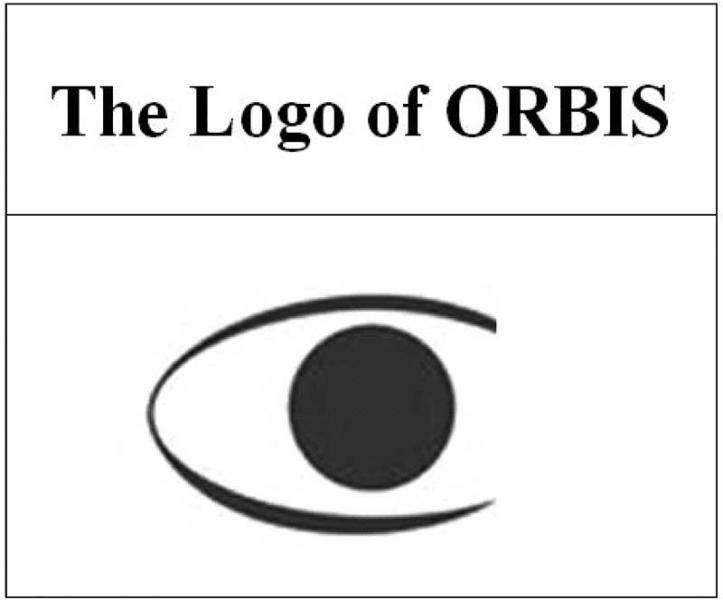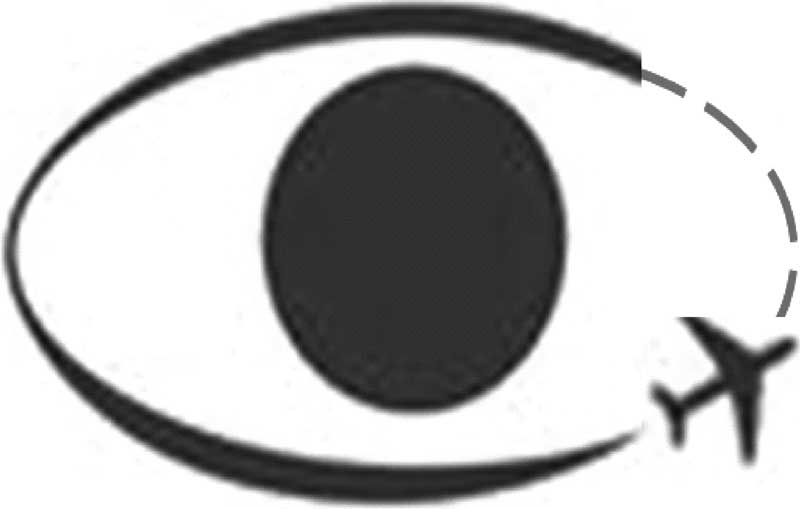表2 Being an efficient reader
|
Being an efficient reader(做一个有效率的阅读者)
|
|
Being a keen reader(做一个热切的读者)
|
话题导入
|
|
Being a smart reader(做一个聪明的读者)
|
阅读策略
|
|
Being a sharp reader(做一个敏锐的读者)
|
主要事实
|
|
Being a critical reader(做一个有主见的读者)
|
批判性阅读
|
|
Being a cross-cultural reader(做一个跨文化的读者)
|
拓展延伸
|
三、优化阅读过程
英语阅读教学分为三个主要过程:Pre-reading、While-reading和Post-reading。其中,While-reading是阅读教学的主体部分。阅读教学的最佳结构是橄榄形,两头小中间大。
Pre-reading是阅读教学的开头,应该短小、精彩,旨在激活学生与话题相关的已有的背景知识,为下一阅读环节作铺垫。While-reading是阅读教学的主体部分,应该有充实、丰富的内容。教师和学生应该把主要的时间和精力放在如何使用恰当的阅读策略获取主要事实和观点上。Post-reading属于读后的拓展,要引导学生独立思考,批判性地对待文章中的观点,或创造性地使用已获取的信息。
然而,许多教师往往本末倒置,在读前导入和读后拓展环节花费了太多的时间和精力,而对While-reading这一主体环节一带而过,导致读前导入和读后拓展有喧宾夺主之势,课堂教学结构形同一个哑铃,两头大中间小。导致这种畸形课堂结构的原因主要有两个:
一是过分夸大读前导入的作用。整体阅读教学模式建立在图式理论(Schema Theory)的基础上,其核心思想是人们在理解新事物时,总是将新事物与已有的知识联系起来。显然,学生与话题有关的原有知识越多,阅读理解的难度就会越小。中小学英语教师对图式理论的理解经历了一个很长的过程,从陌生到熟悉,从忽视到重视,现在甚至出现了“读前导入挤占阅读本身”的矫枉过正的局面。
二是有些公开课教师哗众取宠,想使用一些热闹的、华而不实的场面来迎合听课教师。阅读前和阅读后阶段主要以听说为主,课堂气氛显得活跃。相比较而言,阅读中阶段是一个比较安静的过程,学生需要静下心来才能有效加工和处理文章的主要信息。而有些教师却把这种自然的阅读过程视为“冷场”。
在本节课中,执教教师把While-reading作为阅读教学的主体环节,引导学生把主要时间和精力花在这个教学环节上,从而使这三个阅读教学阶段呈现出“凤头、猪肚和豹尾”的理想形态。
Pre-reading应该像凤头那样短小、精彩。本节公开课的执教教师对读前活动设了时间限制,点到为止,大约用5分钟就成功地导入了文章的话题、采访的形式和几个影响阅读理解的关键词汇。
While-reading是阅读教学的主体部分和核心阶段,应该像猪肚子那样有充实、丰富的内容。如果不注重这个阶段,反而注重一些细枝末节,再华丽的读前导入活动也只能是绣花枕头——中看不中用。在本节阅读公开课上,师生都把主要的时间和精力放在如何使用恰当的阅读策略获取主要事实和观点上。通过判断采访问题、理解国际奥比斯组织的标识和树形图等教学环节,学生牢牢掌握了国际奥比斯组织的主要信息。
Post-reading属于读后的拓展,要像豹子尾巴那样刚健有力。阅读后的拓展讲究厚积薄发,只有稳扎稳打,步步为营,扎实地完成阅读中的各项任务,读后的拓展才会显得雄健有力,起到画龙点睛之效果。在本节课中,由于有读前和读中活动的充分铺垫,读后的拓展活动水到渠成。在本节课最后的5分钟里,学生纷纷举手,踊跃发言,让人难以相信这发生在借班上课的课堂之中。
四、优化教学细节
1. 凸显文章脉络
课堂不是教学活动和任务的杂乱无章的堆积,它需要一条贯穿始终的线索。明晰的线索有利于学生对阅读材料中的信息进行有效提取、加工和处理。在本节课的教学设计中,我们梳理出形式和话题两个主要线索:(1)形式主线索是:提问和回答问题。本文是一篇采访稿,由6组问题和回答组成。(2)话题主线索是:用英语介绍一个国际性慈善组织时,应该包括该组织的成立缘由、运作方式、受助者的反应、大众参与方式等几个主要方面的内容。
这两条主线索是相辅相成、相互吻合的,只要紧紧抓住形式主线索中的六个问题,就可以获取关于国际奥比斯组织的主要信息。本节课的教学设计是围绕这两条主线索步步深入、层层展开的。许多听课教师在听课后都有一个共同的感受:本节课脉络分明,听完课后不用参照听课笔记就能回忆起教学过程的框架和文章的主要内容。
2. 简化信息转换
在英语阅读教学中,教师常使用的阅读任务包括回答问题、判断正误、猜测词义、多项选择和中英互译等。这些传统阅读任务只局限于检测学生阅读理解的结果,不注重学生的阅读理解过程。
英语阅读教学是一个“信息输入→信息转换→信息输出”的过程,主要目的之一就是让学生学会快速捕捉信息和加工信息,并为以后的交际储存更多的可以随意提取的信息。课文是信息的载体,纯粹以文本形式呈现的信息往往头绪繁杂,会增加记忆的负担。教师可利用信息转换手段,帮助学生把文本形式的阅读内容转换成另一种形式,便于信息的加工和保存。在阅读教学中常用的转换手段有:图片、简笔画、表格、树形图、网络图、流程图和时间线等。这些手段可以通过完整的视觉表象形式将文本的主要内容、人物和事件的发展关系(网络图)、分类关系(树形图)、事件的发展过程(流程图)以及戏剧场景(简笔画)等生动、清晰地呈现给学生,为之后的交际活动储存更多的有效信息。
例如,在本节公开课中,执教教师利用了国际奥比斯组织的原始标识、隐去飞机部分的图片和增加虚线的图片(如下图),形象地概括出文章的三个主要部分,帮助学生获取这个组织的主要信息。
|
Logo(标识)
|
Implication(寓意)
|
|
(隐去了飞机)
|
看起来像地球和眼睛,象征着全球的眼病问题,与课文的第一部分(something about blindness)相对应。
|
|
(原始标识)
|
新增的飞机象征着ORBIS是一个飞行眼科医院,与课文的第二部分(a flying eye hospital)相对应
|
|
(增加了虚线)
|
虚线表示目前ORBIS由于能力有限而不能到达世界上的所有地方,因此这个组织希望得到更多读者的帮助,与课文的最后一个部分(Dr. Ma’s hope)相对应。
|
3. 巧用逆向思维
对于某些特殊问题,可以从结论往回推,反过来思考,从问题的相反面深入探索。
本节课的阅读材料是一篇采访稿,由记者的六个问题和被采访者(Dr Ma)的六个回答组成。采访的中心环节就是提出和回答问题。一般的思维方式是根据问题来寻找相应的答案,本节课的教学设计却反其道而行之,先呈现被采访者的回答,让学生快速阅读,如:
|
Dr Ma: Blindness affects about 45 million people around the world, mostly in poor countries, and about 80 percent of these cases can be cured or prevented. However, many people do not have the money for medical treatment.
|
然后,再让学生从记者的立场去思考要得到这样的答案,应该提出什么样的问题。
学生要提出正确的问题,就必须看懂这段文字,并准确概括出其段落大意,最后从下面的两个问题中挑选一个正确的,这样就促使学生从被动的阅读者转变成了积极主动的思考者。
|
Interviewer’s question:
□Dr Ma, could you tell us something about blindness?
□Dr Ma, how many people have eye problems?
|
循规蹈矩的思维方式虽然简单省事,风险小,但是容易使思路刻板、僵化,得到的往往是毫无创意的答案。其实,每个事物都具有多面性。人们由于受以往经验的束缚,往往只看到熟悉的一面,而对陌生的一面视若无睹。逆向思维能克服这一障碍,往往给人以耳目一新的感觉。
五、结束语
英语阅读教学要在有理、有序、有效的基础上实现自我超越和突破。有理是指教学设计符合语言教学规律,做到因材施教。有序是说教学环节要前后衔接,做到层次分明。有效是指教学设计应追求课堂教学的实际效果。
————————
参考文献
张军丽,赵雪. 2010. 从学习金字塔理论反思英语词汇教学[J]. 中国校外教育,(10):107-108.
附录1:教学简案
本节课的阅读材料是《牛津初中英语》(译林版)八年级下第五单元中的课文An Interview with an ORBIS Doctor。授课对象为初二学生,借班上课。执教教师是江苏省张家港外国语学校朱益春老师。
Step 1: Be a keen reader.
1. Conduct a short interview.
Ask the monitor about eye problems among the students. The questions are as follows:
Q1: How many students are there in your class?
Q2: How many of you are wearing glasses?
Q3: Why are you wearing glasses?
Q4: Why do you have eye problems?
[设计说明]通过对班长做一个小采访,导入本节课的话题,同时让学生感知本课采访型的文章体裁。
2. Tell a short story.
Tell a story about a patient who has eye problems and is helped by Dr Ma, a famous eye doctor. By doing so, new key words are introduced and students are inspired to guess the meanings of the new words in context. The new key words include:
patient blind blindness
affect afford volunteer
operate cure
[设计说明]通过讲故事创设语境,呈现阅读材料中的关键生词。
3. Complete the story.
Get the students to read the story again with some words missing. The students are expected to complete the story with the new words they have just learned.
[设计说明]学生用刚学的生词填空,完成短文,巩固词义。
4. Ask questions.
(1)Explain the meaning of the word“interview”.
(2)Stress the importance of asking questions in an interview.
(3)Encourage the students to ask Dr Ma some questions about eye problems.
[设计说明]通过阅读前的预测活动有效激活学生已有的背景知识。
Step 2: Be a wise reader.
The students are going to read an interview with Dr Ma, but the interviewer's questions are missing. Students are expected to read the answers quickly and then decide which question will be asked. The following is used as an example.
Answer: Blindness affects about 45 million people around the world, mostly in poor countries, and about 80 percent of these cases can be cured or prevented. However, many people do not have the money for medical treatment.
Question:
□ A. Dr Ma, could you tell us something about blindness?
□ B. Dr Ma, how many people have eye problems?
[设计说明]引导学生进行逆向思维,让学生根据采访回答来判定对应的采访问题。
Step 3: Be a sharp reader.
1. The first part of the logo
Use the first part of the logo of ORBIS to help the students see how serious eye problems are around the world.
■
[设计说明]创造性地挖掘logo的象征意义,帮助学生掌握与课文内容相关的信息。
2. The second part of the logo
Use the second part of the logo to help the students know why a plane is needed by ORBIS doctors.
[设计说明]突出logo中飞机的象征意义,重点讲述ORBIS的工作方式。
3. The extension of the logo
Get the students to understand that the circle with a small part missing indicates that there are still some places where ORBIS can't go to help others and that more help is needed.
[设计说明]大胆地改动了logo,巧妙地引出Dr Ma的希望。
Step 4: Be a critical reader.
Inspire the students to be independent readers by voicing their own opinions about what is the best way to support ORBIS. A controversial sentence is selected from the interview and the students are encouraged to discuss the issue.
The sentence is: We hope more people will support us by sending donations to us.
Questions for discussion:
Do you think it is good to donate money to ORBIS?
If you think it's good, why?
How can we raise more money?
If not, why not? Do you have a better way to support it?
[设计说明]引导学生进行批判性阅读,学会在阅读中独立思考。
Step 5: Be a cross-cultural reader.
1. Help the students appreciate the value of working as a volunteer.
2. Do a survey among the students about how many of them have ever worked as volunteers.
3. Encourage the students to take part in volunteer work in their community.
[设计说明]拓展延伸,鼓励学生从身边做起,成为积极的志愿者。
[注:本文只提供教学简案。如果想阅读教学详案,请访问我刊网站(http://www.flts.cn/node/398)或登录作者个人博客:葛文山的英语教育博客(http://blog.sina.com.cn/efm886)。]
附录2:本节课阅读材料
An Interview with an ORBIS Doctor
Interviewer: Dr Ma, please tell us something about blindness.
Dr Ma: Blindness affects about 45 million people around the world, mostly in poor countries, and about 80 percent of these cases can be cured or prevented. However, many people do not have the money for medical treatment.
Interviewer: How does ORBIS help?
Dr Ma: ORBIS uses a flying eye hospital to visit poor countries. On the plane, volunteer doctors perform operations. The plane is also used as a teaching centre.
Interviewer: Dr Ma, you said that you work on a plane. Why don't you work in a hospital?
Dr Ma: Many of our patients are so poor that they can't afford to travel to hospital, so we have to go to them. Also, local doctors and nurses can come to our plane to learn about eye operations. We teach them new skills and share our knowledge. They can even watch the operations on video. By training local doctors and nurses, we hope to help even more people.
Interviewer: How many operations do you perform during a visit?
Dr Ma: During my last visit, I operated on 150 patients on the plane. When I worked in a hospital, I used to do only two or three operations a day. It's hard work and we need to work very quickly, but I am used to it.
Interviewer: You've done such an important job that people must be really grateful to you.
Dr Ma: Yes, indeed they are. However, the most important thing for us is that we can help people see again. I'm proud to be able to help so many people.
Interviewer: Thank you very much for your time, Dr Ma. Is there anything else you'd like to say to our readers?
Dr Ma: We're the lucky ones. Modern medicine is developing so quickly that we can treat and cure most eye problems and improve the lives of patients. All we need is enough money to carry on with our work. We hope people will support our work by sending donations to ORBIS.






